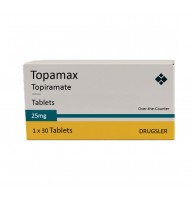Topiramate, like any medication, has the potential to cause side effects and can be harmful if not used correctly. However, when prescribed and monitored by a healthcare provider, it can be highly beneficial for treating conditions such as epilepsy, migraines, and, in some cases, aiding in weight loss or addressing other off-label uses. The key to minimizing harm lies in appropriate use and close monitoring.
Common side effects of topiramate include weight loss, tingling sensations (paresthesia), dizziness, fatigue, drowsiness, and cognitive issues such as memory problems and difficulty concentrating. These side effects are typically manageable and often decrease over time as the body adjusts to the medication.
More serious side effects can occur and require immediate medical attention. These include:
- Metabolic acidosis: This condition involves an excess of acid in the body and can be serious if not monitored and managed. Symptoms include rapid breathing, fatigue, loss of appetite, and irregular heartbeats.
- Kidney stones: Topiramate can increase the risk of kidney stones, which can cause severe pain and require medical intervention.
- Eye problems: Acute myopia and secondary angle-closure glaucoma are rare but serious side effects that can lead to permanent vision loss if not treated promptly.
- Mood changes and mental health issues: Some individuals may experience depression, anxiety, or suicidal thoughts. This requires close monitoring, especially in those with a history of mood disorders.
- Severe skin reactions: Conditions like Stevens-Johnson syndrome and toxic epidermal necrolysis are rare but can be life-threatening and require immediate medical attention.
Long-term use of topiramate should be carefully managed, with regular check-ups to monitor for any potential adverse effects. Patients should always follow their healthcare provider's instructions regarding dosage and report any new or worsening symptoms promptly.
In summary, while topiramate can have potential harmful effects, these risks are generally outweighed by its benefits when used correctly and under medical supervision. Regular monitoring and open communication with a healthcare provider are essential to ensure safe and effective use of the medication.

